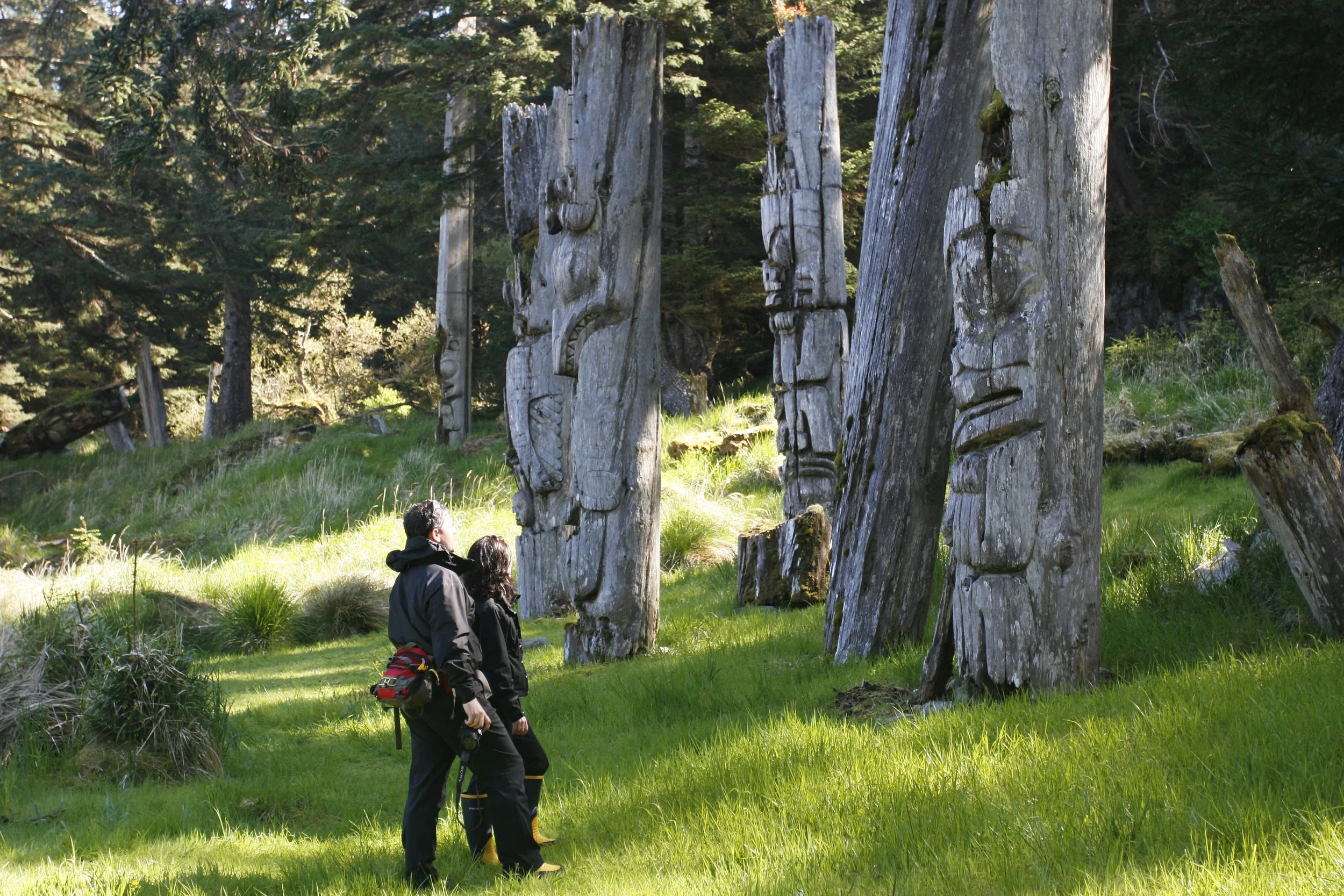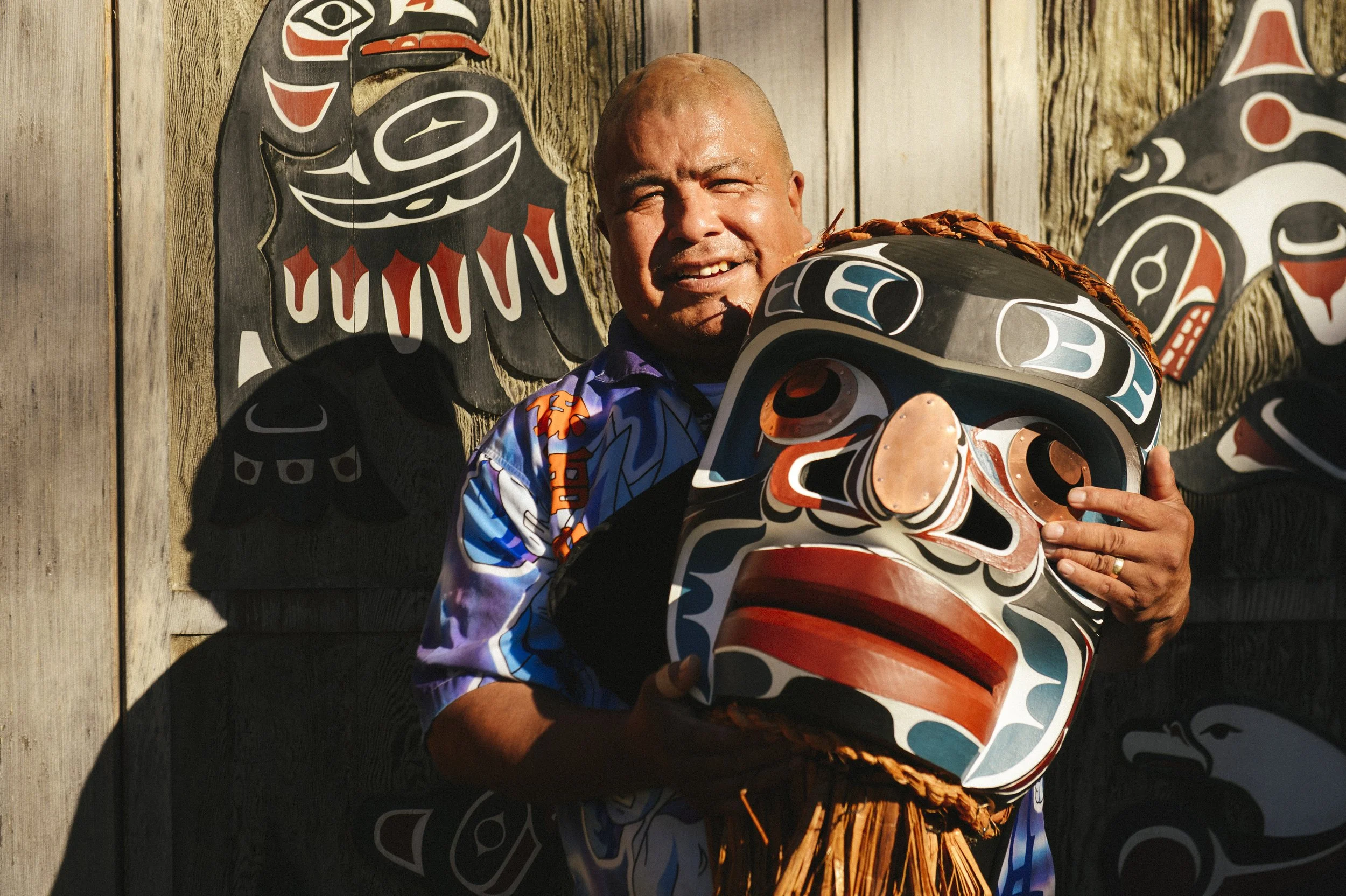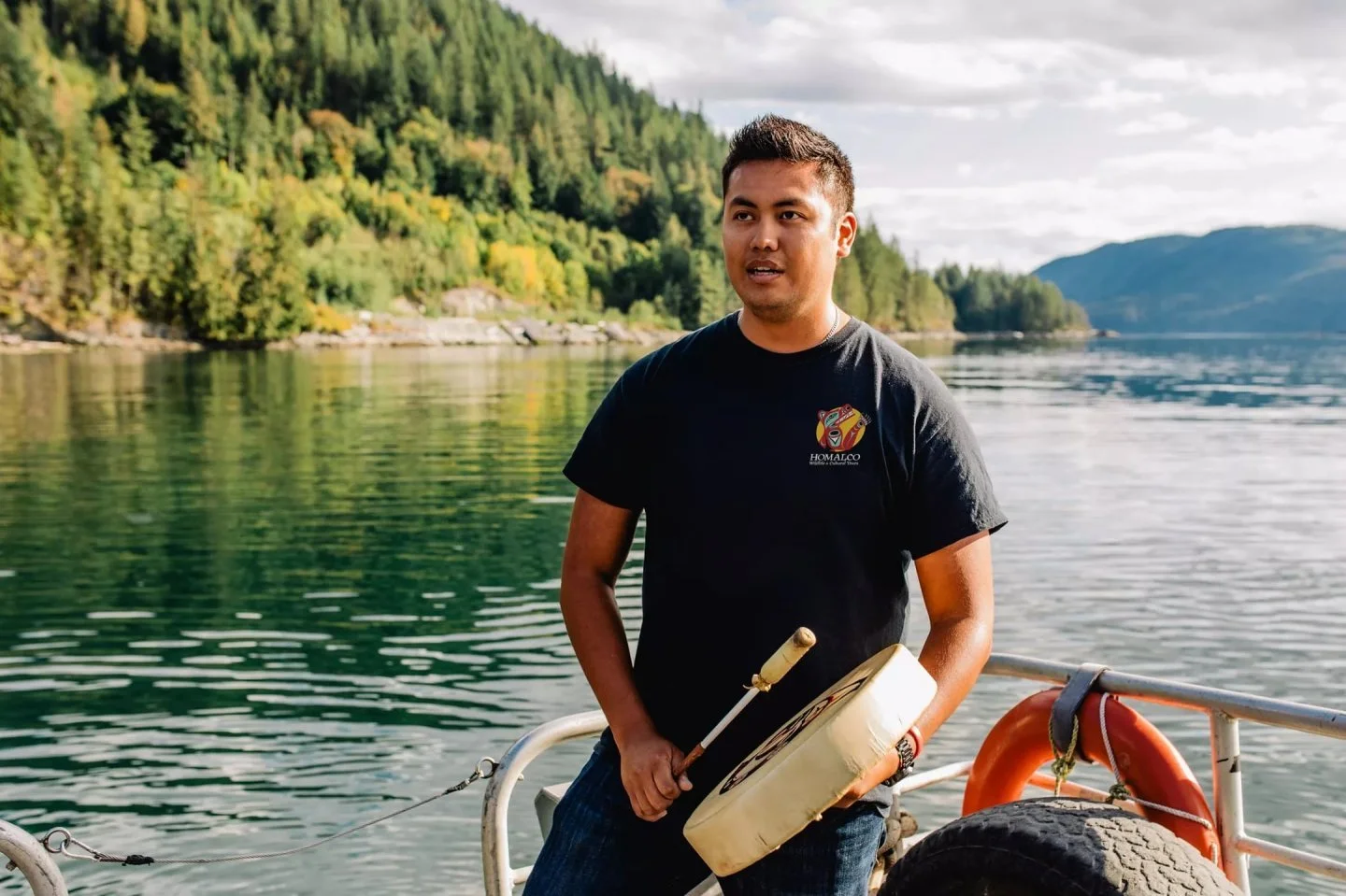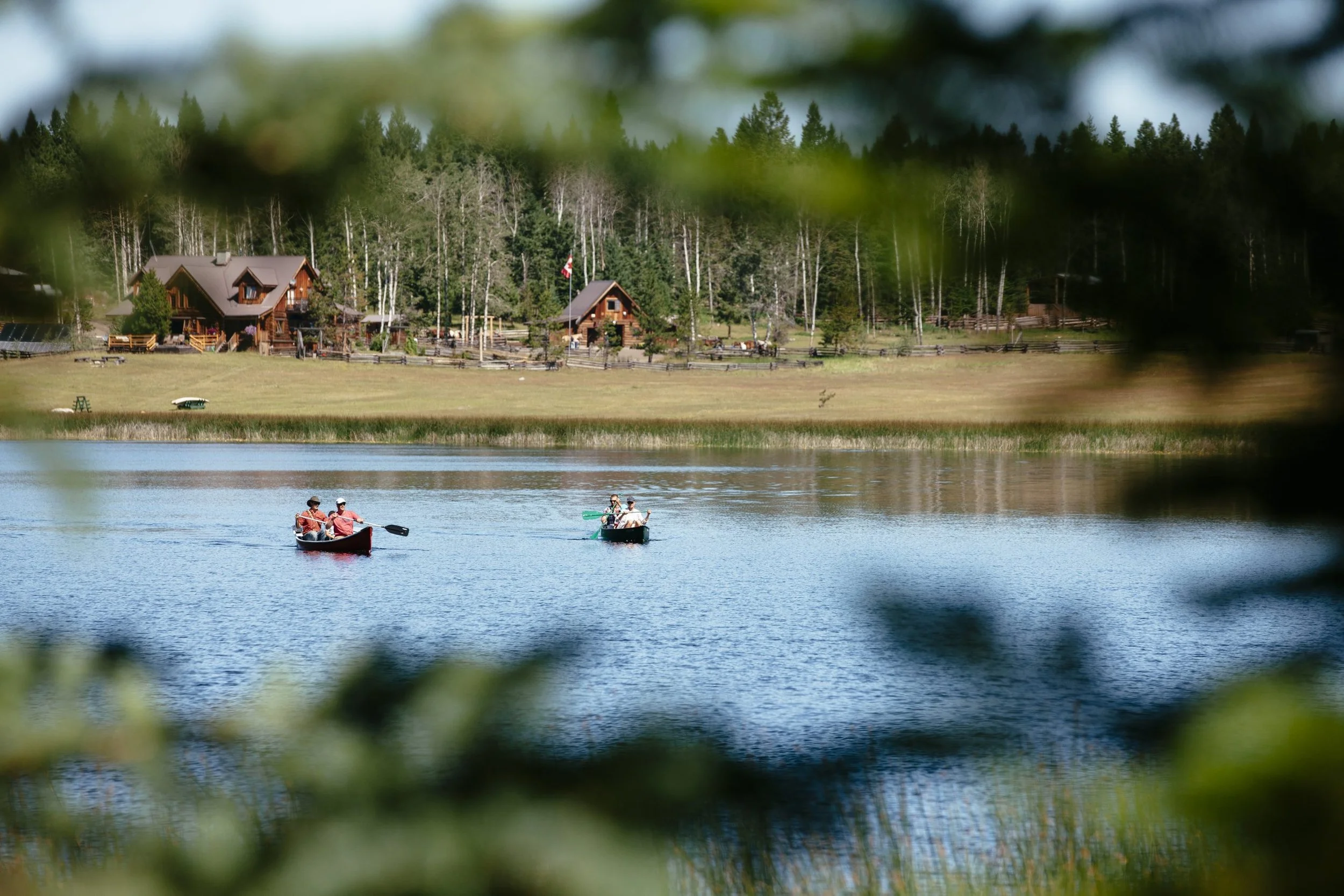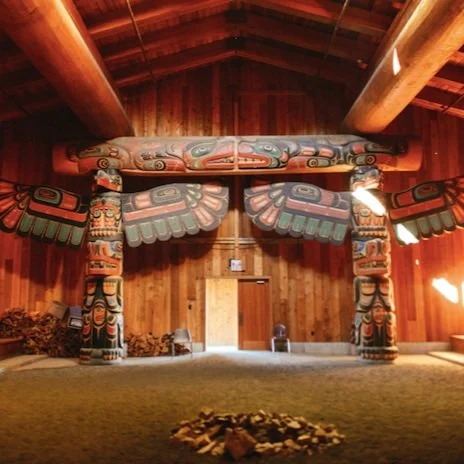Responsible Traveler: Indigenous Empowerment
Travel can mitigate stereotypes, connect cultures, and naturally educate humans on how to interact respectfully with each other, wildlife, history, and the culture of a place. Over the last few years, we’ve seen a big shift in the way consumers want to travel. We’re seeing people take interest in making meaningful connections with the places they visit — and especially since the pandemic, people are more drawn to visiting wild spaces. As such, demand for authentic Indigenous tourism experiences is growing, and therefore so is the importance of learning how to respect and support Indigenous Peoples while traveling.
Regenerative, or Restorative, travel means to leave a place better than when you found it — to help restore and protect the lands and communities you visit. This is what a Responsible Traveler does. With 204 Indigenous communities and over 30 Indigenous languages, British Columbia has a plethora of Indigenous experiences across all regions.
“Tourism is a powerful cultural and economic tool to engage and directly benefit Indigenous Peoples in Canada”
—Robin Esrock, Canadian Geographic Travel
When it comes to Indigenous tourism, here are some ways you can assume the role of a Responsible Traveler:
BOOK WITH OPERATORS THAT HAVE HIGH COMMUNITY ENGAGEMENT
Tourism operators in BC are often based in remote areas, where the economic health of these businesses reflects that of the communities surrounding them. Many of these communities are Indigenous. Therefore, making sure you’re booking with a tourism operator that engages meaningfully with the community (such as collaborating with and consulting with their local community) while conducting business, is crucial. Look for operators who hire Indigenous staff, who seek input from Indigenous communities when expanding their business, and who follow the advice of Indigenous Peoples on how to protect the land.
“Your travel plans affect Indigenous Peoples-their communities, languages, cultures, waters, animals, and lands.”
—Indigenous Tourism Association of BC
BOOK WITH OPERATORS THAT MAKE ENVIRONMENTAL HEALTH A PRIORITY
Not only is it important to preserve our wild spaces so we can enjoy them for years to come, but it’s also important because the health of the climate and the ecosystems has a direct impact on local, Indigenous livelihoods. Indigenous Peoples often live off the land — they are economically and spiritually connected to it. Their lives depend on a balanced environment so it can provide clean water, fertile soil, substantial food, sufficient shelter, and effective medicines. They suffer when the environment is threatened by climate-change, large-scale industrial activities, toxic waste, human conflicts, overuse of land, deforestation, mining, and agriculture. This is why it’s of the utmost importance to book with eco-friendly tour operators whose mission is to protect the land — to grow with the land, not onto it.
DO YOUR RESEARCH, KNOW BEFORE YOU GO
Dive into resources like Native Land Digital, a website for people to learn more about the history, culture and significance of the lands they inhabit and visit. This site showcases a map that includes Indigenous Territories, Treaties, and Languages — with the goal of helping people gain an understanding of themselves, their ancestors, the world they live in, and how to respectfully interact with it all. This gives the opportunity for guests and settlers to connect with Indigenous People through understanding the sacredness and history of the land.
BOOK WITH INDIGENOUS TOURISM BUSINESSES AND UNDERSTAND YOUR IMPACT
Putting your money into Indigenous tourism businesses and/or experiences is an investment in Indigenous youth and culture and helps them continue to thrive. Indigenous Tourism aids Canadians with their own reconciliation process too. It’s important that non-Indigenous Canadians can connect to the lands, traditions, and ways of life of the Indigenous Peoples of Canada. As we continue to mourn the children lost to residential schools, we seek ways to support reconciliation… and Indigenous Tourism is a great way that educates Canadians on Indigenous culture and history, and on how to share it.
Here are a few Indigenous owned WTA members:
Holmaco Wildlife & Cultural Tours welcomes guests to experience a connection with the culture of the Holmaco First Nation. They have many tours that allow visitors to engage in hands-on experiences of the Holmaco (Xwémalhkwu) First Nations culture. Their People Water Land tour features a half-day venture into the Salish Sea to learn about the Holmaco Peoples and their neighbouring wildlife, with activities like cedar bracelet making, bear viewing, and whale watching. You will learn the symbolism and cultural significance of Eagles, Salmon, Whales, and Bears as you witness them frolicking in their natural environments.
Siwash Lake Wilderness Resort is an Indigenous owned Wilderness Resort and Guest Ranch within the un-ceded territories of several Secwépemc communities. Siwash Lake offers authentic, nature-based adventure experiences that are in complete harmony with the surrounding land. This luxury getaway features high-end tented camping, horseback riding, catch and release fly-fishing, backcountry hiking, ecology and bush craft lessons, cross terrain archery, canoeing, and so much more. Each experience is inspired by the ways of their Indigenous ancestors of the Esk’etemc Nation, allowing their stories to be woven throughout. The experiences at Siwash Lake are designed to “help you strengthen your interpersonal and cultural connections, and teach you how to actively combat climate change.”
Knight Inlet Lodge is a five partner — Da’naxda’xw Awaetlala, Mamalilikulla, Tlowitsis, Wei Wai Kum and K’ómoks — Indigenous-owned, wildlife viewing destination. This floating resort is based in the heart of the Great Bear Rainforest of British Columbia. Guests can access the lodge by sea or by air, for a stay filled with bear watching and whale viewing via boat.
Here are a couple non-Indigenous owned WTA members offering Indigenous tourism experiences:
Bluewater Adventures is a 12-passenger expedition yacht providing world class experiences to unique and remote destinations. Their trips to Haida Gwaii feature a chance to learn from local First Nations guides and elders about their culture, history, and art, while touring inside local Longhouses (traditional dwellings). Another expedition takes you to the Khutseymateen Grizzly Bear Santucary, where you can learn about the Tshimshian First Nations who have lived in the area for thousands of years as you pass two of their villages on route.
Maple Leaf Adventures offers an 8-day land and sea adventure to Haida Gwaii — you’ll have the chance to explore rich marine life and rainforests as well as the Haida culture. They’ll take you to modern villages of Graham Island where Haida culture is alive and flourishing. Here you can see Indigenous artwork. In Gwaii Haanas, you can view ancient monumental poles and house remains, while learning from Haida guides on the purpose of the poles and the stories of their ancestors.
West Coast Expeditions is a sea kayak tour company based on Spring Island in Kyuquot, BC. Among camping, kayaking, and marine wildlife viewing, their tours feature Indigenous cultural interactions — a special one being a traditional salmon feast around an open fire after paddling through and learning about the historic sites of the Kyuquot Checleset First Nations Peoples.
What else can you do?
CHOOSE EXPERIENCES RECOMMENDED BY ITAC AND ITBC
The Indigenous Tourism Association of Canada (ITAC) and the Indigenous Tourism Association of British Columbia (ITBC) are great resources when it comes to finding Indigenous tourism experiences — they both represent a myriad of Indigenous owned and operated companies across the country. ITAC is now globally recognized for Indigenous tourism development and marketing — they just announced they will be using $65 million over the next 3 years to support their members through leadership, partnership, development, and marketing.
ITBC recently launched the Indigenous BC Trip Planner App, which is a great tool for finding authentic Indigenous experiences and tourism operators across BC. The app even features common Indigenous words and phrases, songs, stories, and maps.
TRAVEL WITH INTENTION
ITBC encourages you to travel with Intention — “Choose a destination that allows you to stay, learn, and contribute in one geographic area. Practice traveling with intention, not hyperspeed. Travel slow and take it all in.”
NEXT STOP
→ Responsible Traveler: Environmental Footprint This article features tips on how to move with knowledge and respect for the lands, wildlife, and communities of BC, and insight to understanding one’s part in the province’s ecosystem.
